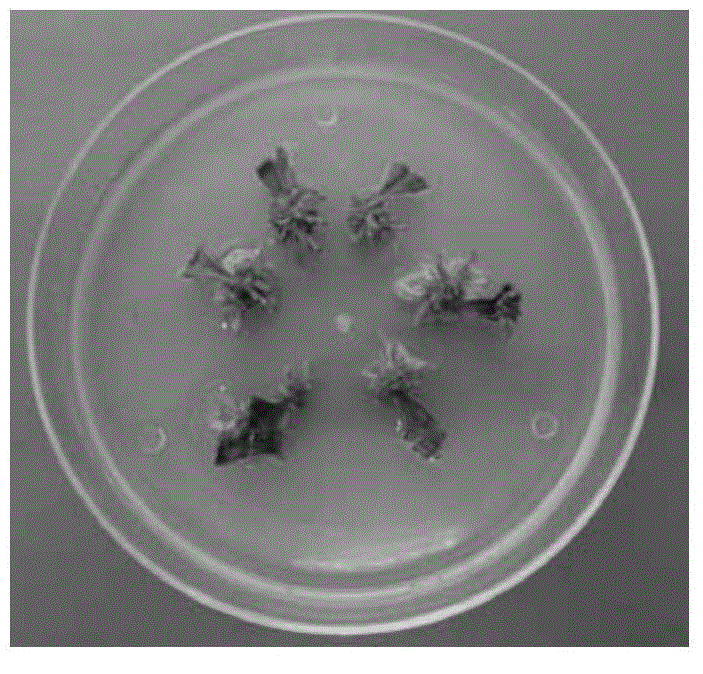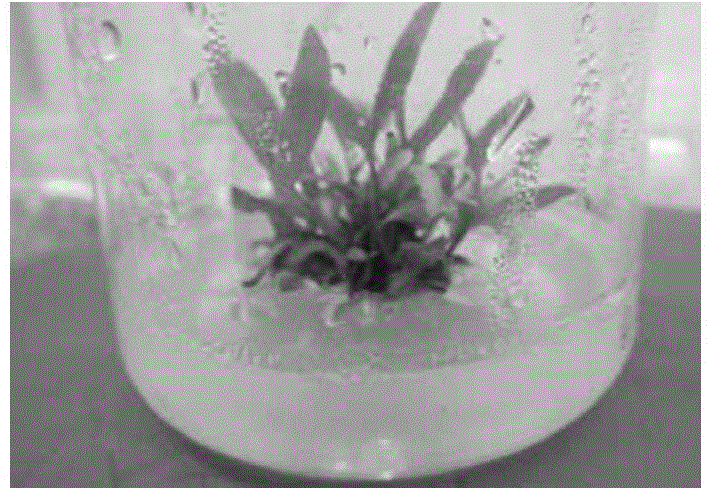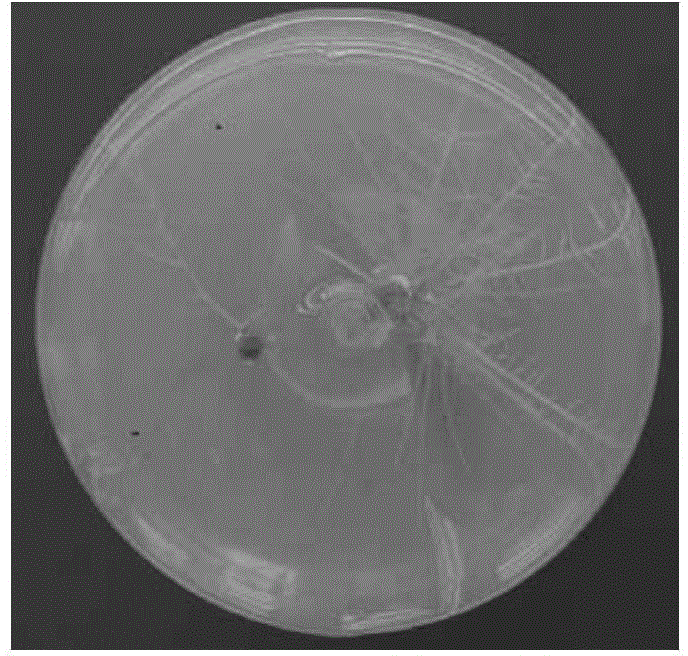Populus trichocarpa Torr.Gray leaf adventitious bud induction and plant regeneration method
A bud induction technology of Populus trichocarpa, applied in plant regeneration, botany equipment and methods, gardening methods, etc., can solve the problems of low adventitious bud induction rate, difficulty in cultivating organs, low plant regeneration rate, etc., and achieve simple operation steps Feasible, broad application prospects, and the effect of shortening regeneration time
- Summary
- Abstract
- Description
- Claims
- Application Information
AI Technical Summary
Problems solved by technology
Method used
Image
Examples
specific Embodiment approach 1
[0014] Specific embodiment one: the method for the induction of adventitious buds of leaves of Populus trichocarpa and plant regeneration in the present embodiment is carried out according to the following steps:
[0015] 1. Collection and processing of materials: Select Populus trichocarpa plants that grow robustly and are free of diseases and insect pests cultivated in the greenhouse, collect newly sprouted branches, cut off the leaves on the branches, and cut the remaining branches into lengths of 9 to 11 cm with The stem segments with 3 to 4 bud points are washed with tap water for 1 to 2 hours;
[0016] Two, inoculation culture and the proliferation of aseptic seedlings: after aseptic treatment, the stem section washed with tap water is inoculated into the rooting medium WPM3 and cultivated, and the aseptic seedlings are propagated;
[0017] 3. Induction of adventitious bud differentiation: use the leaves of P. trichocarpa aseptic seedlings cultivated in step 2 as explant...
specific Embodiment approach 2
[0022] Specific embodiment two: the difference between this embodiment and specific embodiment one is: the specific method of inoculation and cultivation and the propagation of aseptic seedlings described in step two is: the stem section washed with tap water is washed once with sterile water , then put the stem section into 70% alcohol for disinfection for 30 sec, take out the stem section and wash it 3 times with sterile water, then disinfect it with 2% sodium hypochlorite for 7 minutes, and wash it again with sterile water for 30 seconds. Finally, use sterile filter paper to dry the water on the surface of the stem section, use sterile scissors to cut off the part of the stem section that has been oxidized by the disinfectant solution, and then cut the remaining stem section into a small section containing only one bud point, and inoculate On the rooting medium WPM3, at a temperature of 23-25°C, with a daily light of 12-16h, and a light intensity of 30-40μmol·m -2 ·s -1 Cu...
specific Embodiment approach 3
[0023] Specific embodiment three: the difference between this embodiment and specific embodiment one or two is: in the step 3, the adventitious bud induction medium WPM1 is made of 400mg / L KNO 3 , 370mg / L MgSO 4 , 96mg / L CaCl2, 8.6mg / L ZnSO 4 , 0.25mg / L CuSO 4 , 27.8mg / L FeSO 4 、990mg / L K 2 SO 4 , 170mg / L KH 2 PO 4 , 22.4mg / L MnSO 4 , 6.2mg / L H 3 BO 3 , 0.25mg / L NaMoO 2 2H 2 O, 37.3mg / L Na2EDTA, 1.0mg / L Thiamine Hydrochloride, 0.5mg / L Pyridoxine Hydrochloride, 0.5mg / L Niacin, 2.0mg / L Glycine, 100mg / L Inositol, 25mg / L Sucrose, 5.6mg / L agar, 0.01~1.0mg / L 6-benzyl adenine, 0.01~1.0mg / L indole butyric acid, 0.0001~0.01mg / L thiadidiazuron and distilled water, pH value is 5.8. Others are the same as in the first or second embodiment.
PUM
 Login to View More
Login to View More Abstract
Description
Claims
Application Information
 Login to View More
Login to View More - R&D
- Intellectual Property
- Life Sciences
- Materials
- Tech Scout
- Unparalleled Data Quality
- Higher Quality Content
- 60% Fewer Hallucinations
Browse by: Latest US Patents, China's latest patents, Technical Efficacy Thesaurus, Application Domain, Technology Topic, Popular Technical Reports.
© 2025 PatSnap. All rights reserved.Legal|Privacy policy|Modern Slavery Act Transparency Statement|Sitemap|About US| Contact US: help@patsnap.com



